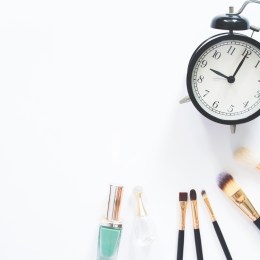Vitamin A is certainly nothing new. But over the last several years in particular, the market has been saturated with options, which may be causing your clients, and even your therapists, some confusion.
Vitamin A is a lipid soluble vitamin and refers to the family of ingredients known as Retinoids, renowned for having powerful anti-ageing properties when used in skincare. But that’s where the buck stops for a lot of your clients, who may not realise that A) not all Vitamin A is the same and B) there are countless more benefits to Vitamin A than just ‘anti-ageing’.
To address this air of mystery, we’ve asked the Vitamin A experts at Medik8, and put together some of the most commonly asked questions about Vitamin A, so you can reassure even the most skeptical clients.
Retinol, Retinaldehyde, Retinoic acid – what’s the difference?
These are all types of Vitamin A, at different stages of conversion – or to put it another way, different levels of concentration. Retinol is the most common form, Retinoic Acid is generally used in prescription skincare and not available for cosmetics (it can be very irritating and reactive on the skin) and Retinol Esters are also very commonly used in skincare but are very weak. Trans-Retinol is the optimal configuration of Retinol.
Why couldn’t I use a cheaper Vitamin A alternative?
Many clients may argue that they can find an affordable chemist or retailer Vitamin A cream or serum. This is a great opportunity to explain that Vitamin A comes in many forms, and each form determines how (if at all) effective it will be. Cheaper options will tend to contain lower, cheaper forms of Vitamin A like Retinol Esters, offering barely any benefits whatsoever. It is absolutely a case of ‘you get what you pay for’.
Retinol, though used most commonly in skincare, is also not a particularly stable ingredient, which means that it is highly susceptible to chemical change when coming into contact with other compounds, including water and oxygen. It’s important to use a range of skincare that offers methods of encapsulation to ensure the Retinol remains stable and delivers the results your clients want. Cheaper ranges may not offer this kind of technology, and the Retinol contained within may lose its effectiveness before it even hits the skin.
I thought Retinol was for anti-ageing? Why should it be used in teens, 20s or 30s?
As well as addressing deep set wrinkles, stimulating the production of collagen, accelerating healing, improving hydration and regulating the melanin responsible for pigmentation (often associated with ageing) Vitamin A can absolutely be used in your 20s and 30s to address fine lines and prevent future wrinkles that occur due to collagen destruction. Vitamin A also controls acne-causing Propionibacterium bacteria, as well as regulating sebum production – both often problems for younger clients.
Is it safe to use Vitamin A with hydroxy acids and other products?
Yes! It’s a complete myth that Vitamin A is unsafe to use with AHAs and BHAs. In fact, Vitamin A can actually work more effectively when used in combination with other actives, particularly Vitamin C.
When can I apply Vitamin A?
Another common myth is that it’s unsafe to use Vitamin A during the day. Again untrue – it is generally best to use at night though, as some forms of Vitamin A can break down when exposed to UV, depending on the formula. So it is definitely safe, but perhaps just not as effective.
For more information on Vitamin A and the science behind various types and conversion stages, make sure you stay tuned for our latest issue of SPA+CLINIC coming this May. Click here to subscribe.




